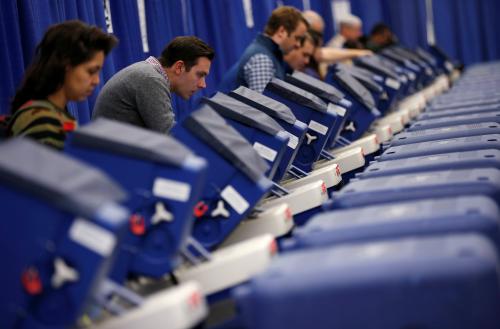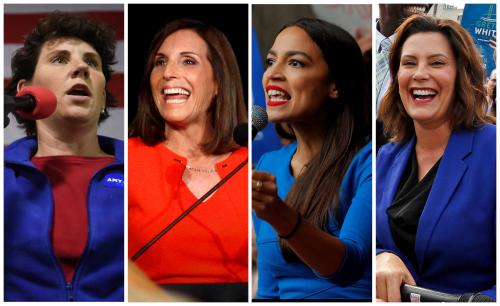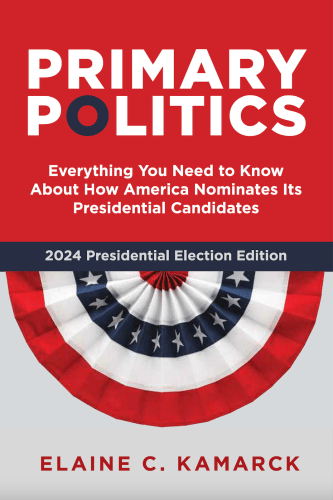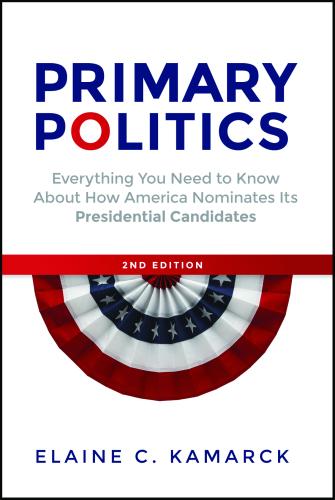This piece was originally published by the Brennan Center for Justice.
Before last Tuesday’s New York primaries, it was easy to get the idea that the most intriguing challenger of an entrenched House Democratic incumbent was 34-year-old Suraj Patel. Taking on Carolyn Maloney, who had been representing Manhattan’s Upper East Side for a quarter century, Patel was described by The New York Times as “running the most millennial of campaigns.”
Patel won attention for unorthodox stunts like what he called “Tinder banking,” using straight and gay dating apps to recruit campaign volunteers. The president of a family-owned hotel company, Patel also made the New York Post for giving out contraceptive keepsakes in wrappers emblazoned with his name and the slogan, “SAY IT WITH A CONDOM.”
But Patel, who worked on the Barack Obama and Hillary Clinton campaigns, mostly won attention in the most traditional way possible—by the size of his campaign bankroll. As the Times reported five days before the primary, “Mr. Patel, a hotel executive, made a splash by amassing $1.2 million in a few short months—rivaling Ms. Maloney’s haul.”
Like almost all primary challengers to entrenched congressional incumbents, Patel fell short, losing to Maloney 59-to-41 percent. But Patel’s aggressive wooing of younger voters and his even more aggressive fundraising helped distract the Times and many national campaign reporters from a far more dramatic story in the outer boroughs—the giant-killer primary victory of left-wing insurgent Alexandria Ocasio-Cortez.
By traditional standards, everything about Ocasio-Cortez made her an implausible candidate to upend Joe Crowley, the fourth highest-ranking House Democrat and a potential successor to Minority Leader Rep. Nancy Pelosi. Ocasio-Cortez was too young (at 28 she will be the youngest woman ever elected to Congress), too much of a party outsider (she worked as an organizer for Bernie Sanders in 2016), and too underfunded (she raised about one quarter as much money as Patel).
Jill Abramson, the former executive editor of the Times who was ousted in 2014, felt compelled to tweet after the newspaper belatedly scrambled to cover Crowley’s defeat, “Kind of pisses me off that @nytimes is still asking Who Is Ocasio-Cortez? when it should have covered her campaign. Missing her rise akin to not seeing Trump’s win coming in 2016.”
Abramson is right. The Times muffed the biggest story of the congressional primary season— and it happened in New York’s 14th district connecting parts of the Bronx and Queens. But the underlying problem extends far beyond the coverage decisions of the Times’ Metro section.
Some of it is the establishmentarian bias of most political reporters who, as a result, didn’t see Bernie Sanders or Donald Trump coming. (I plead as guilty as the rest). Ocasio-Cortez, who describes herself as a “working-class New Yorker,” certainly did not fit the mold of a traditional congressional candidate.
But there is another related belief structure that undermines campaign reporting—and that is the widespread conviction that, in politics, money is the measure of all things.
That money-talks credo made sense back in the era when virtually all voters watched expensive campaign commercials on network TV and the only form of small-donor fund-raising was through stamped letters sent through the mail. But that 20th-century playbook has grown increasingly outmoded with every passing election.
These days, candidates can still squander millions on 30-second TV spots—and often win that way. But as outsiders like Ocasio-Cortez have demonstrated, it is also possible to cleverly harness social media to reach voters at a far lower cost. Ocasio-Cortez’s candidacy was powered by vibrant online videos that underscored the themes of her antiestablishment campaign (“We’ve got the people, they’ve got the money”) while still being visually arresting.
Campaigns are changing, but most political reporters are wedded to the old rules. There is safety in a system that places inordinate emphasis on objective measures like polls and campaign coffers.
Before the votes are tallied, everything else in campaign stories is subjective. Experienced reporters make arbitrary decisions on who to quote, which anecdotes are relevant, and the “underlying mood of the electorate.” Sometimes their instincts are right, sometimes they become overly wedded to an existing storyline like Hillary Clinton’s inevitability.
At a moment when all reporters worry about accusations of bias, it is comforting to say their candidate assessments are based on tangible numbers from polls and fund-raising tallies. This invariably leads to group-think campaign coverage in which only the most iconoclastic reporters are willing to challenge the conventional wisdom about who will win.
The hollowing out of local newspapers, which have always taken the lead in covering House races, accentuates the problem. With hard-pressed political reporters at these sadly dying papers writing three or four stories a day, the idea of actually leaving the office to cover campaign events or interview voters seems an unattainable luxury. The inevitable result: Even more emphasis on fund-raising figures that can be accessed without leaving a desk.
These days, though, money can be a misleading indicator as outgoing Rep. Joe Crowley would be the first to admit. In a telling statistic, Crowley in the 2017-18 campaign cycle corralled more money from real-estate interests ($347,000) than Ocasio-Cortez raised for her entire campaign.
To put fund-raising totals in context, a reporter today also needs to know how effectively the money is being spent, how much enthusiasm the candidate is generating, and the developing impressions of voters. Some of that information is unknowable—since campaign-finance disclosure forms provide little information about consultant fees. But most of it requires the kind of old-fashioned reporting that is difficult under the financial pressures that now govern journalism.
Not all candidates are equal—a fringe figure with no discernable financial or public support is not entitled to more than minimal coverage. But when a candidate like Ocasio-Cortez raises a credible sum ($300,000 in her case), she or he should be taken seriously even if outspent.
Online media and fund-raising means that, even in the era of Citizens United, campaign money does not always guarantee destiny.









Commentary
Money is not destiny
July 7, 2018